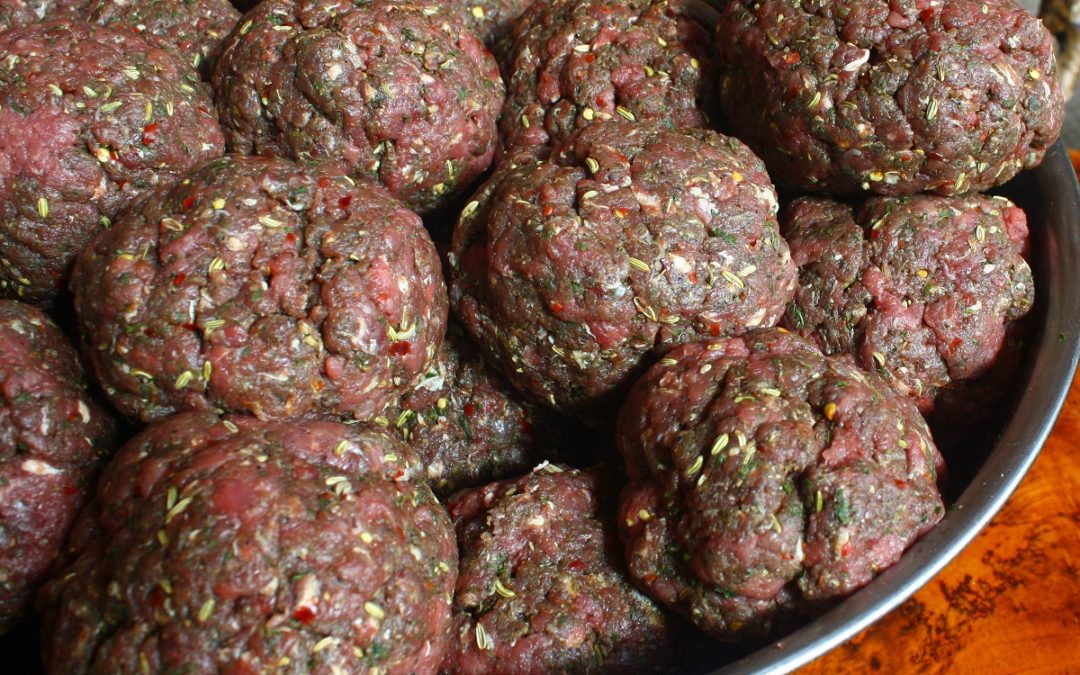by Dana Zia, The Golightly Gourmet
“Game is one of the last pure products in the world.” — John Bain
It is that time of the year when hunters begin to twitch and change into primal predators. I know, I am married to one. Right now, as I write, he is in the belly of an Idaho wilderness, grilling meat on an open fire while wolves howl in the distance. He’ll turn up at home, hopefully hauling meat with him and I will rub my hands together in delight.
When I first met him, I was a vegetarian and proud of it. He had me at “Hello” and I couldn’t believe that I was actually in love with a man that was a hunter. (Neither could my children!) Not only was he a hunter but a very successful one. How could I reconcile this with my consciousness?
The day I got the diagnoses from my eye doctor that said I was anemic; I started looking at the possibility of eating red meat again. Paul happily complied and drug an elk home. I was appalled and intrigued. Paul cooked it with great love, sautéed with onions, apples and rosemary. Oh yes, it was amazing.
After much research I realized that wild game is actually one of the very best meats one can eat. Low in fat, high in protein and grass fed naturally, it is a superior meat. A 3-ounce portion of venison is a good source of iron and selenium, and an excellent source of B6 and niacin. Venison has not been altered through breeding to be bulky and fat marbled. They are as nature made them for thousands of years.
Since venison is an exceptionally lean meat it needs to be cooked a bit differently than other meats. Without all the fat layered throughout the meat, it cooks very fast. When game meat is overcooked the tissues contract, making the meat dry, tough and tasting like liver. There are two successful secrets to cooking game meat. First, do not overcook the meat. Second, let it rest for at least 10 to 15 minutes before tearing into it to let the juices redistribute into the meat.
Cooking venison isn’t that hard if you apply these two rules. The tender cuts are cooked hot and fast like in sautéing, grilling or broiling. Tender cuts are the meat furthest way from the head and feet. The tougher cuts are cooked slow and low, like in braising or stewing. Tougher cuts are the meat closest to the head and feet. (I have an excellent beer stew recipe for this method posted on my blog.)
As for the less desirable meat and sinew, Paul grinds to make burger. Some of that burger is mixed up with his special spice mix and voila! Supreme sausage. He does not add pork like some hunters do, just pure elk sausage. It is so good! I could eat it every single day.
I have managed to arm wrestle his recipe out of him to share with you. (Well, more like flutter my eyelashes and ask nicely.) His sister Aggie helped him develop this recipe. We grind our meat in a “Kitchen Aide” meat grinder attachment that works quite well. If you do not hunt, you could make this sausage with ground buffalo which has similar qualities and available at your local grocer. There are so many recipes you can use this in that the sky is the limit!
Paul’s Supreme Venison Sausage

All spices used are dried. You can use 2 pounds of meat instead of 3 if you want a spicier sausage. Also Paul puts in 2 teaspoons of red pepper for a bit of spiciness. You may add a pound of ground pork (and reduce one pound of venison) to it if you want some fat in it.
3 pounds or 6 cups ground venison or bison
2 teaspoons of fennel seeds
2 teaspoons of dried parsley
2 teaspoons of dried sage
1-2 teaspoon of cracked red pepper
1 teaspoon of ground black pepper
½ teaspoon of ground coriander
1 teaspoon of garlic powder
1 tablespoon of sea salt
Place your ground meat in your mixer bowl with the paddle spoon. Set the mixer going while you sprinkle in the spices till it is all mixed together well. Or, if you don’t have a big strong mixer, go caveman style and mix it by hand. Sprinkle in the spices and hand squishes them into the meat till well mixed. When you cook this sausage up, make sure and use a little olive oil, since there is no fat in it. I recommend cooking a bit and tasting it to see if the seasonings are correct for you and adjust.
Package in whatever size packages that you would like and freeze what you don’t eat soon. Yum, good.

